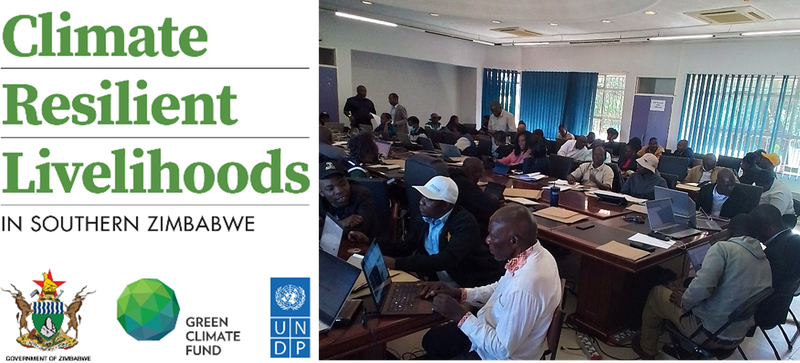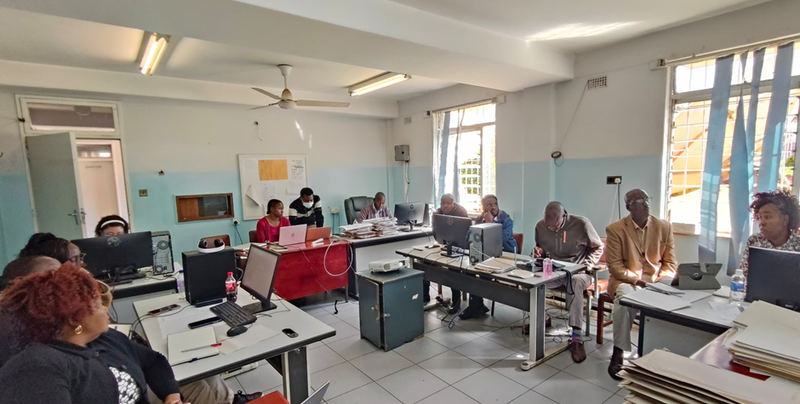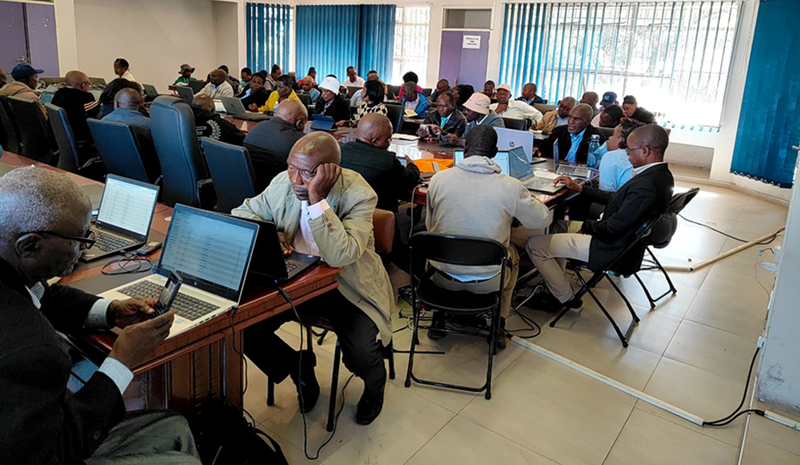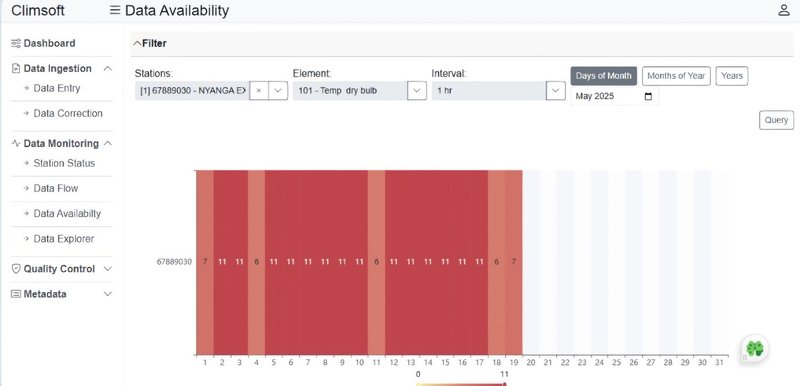MSD deploys Climsoft Web for Real Time Data Integration
The delivery of accurate and timely weather and climate services to stakeholders across key socio-economic sectors relies heavily on the availability of high-quality meteorological data. This data is collected from various sources including manual and automated weather instruments. The integration of these diverse data streams into a unified system enhances the accuracy and timeliness of climate products and services aligning with global initiatives such as the Early Warning for All (EW4All) program.

Since December 2024, the Meteorological Services Department (MSD) has been working closely with IDEMS (Innovations in Development, Education and Mathematical Sciences) under the United Nations Development Programme (UNDP) Green Climate Fund (GCF) project, titled "Building Climate Resilience of Vulnerable Agricultural Livelihoods in Southern Zimbabwe," to modernize its internal data systems. This initiative aims to improve data capturing, quality control, archiving and accessibility for both internal users and external stakeholders, including:
- Zimbabwe National Water Authority (ZINWA)
- Department of Irrigation (DoI)
- Department of Agricultural Technical and Extension Services (AGRITEX)
Operationalizing the Data Integration Architecture
To address persistent challenges such as data backlog and limited access to real-time information, MSD is now operationalizing a new data integration architecture. As part of this transformation, the department rolled out the Climsoft_Web platform, a web-based solution designed to support real-time data entry at station level, to 25 selected meteorological stations following a comprehensive 3-day training session held at MSD Headquarters in Harare from 7 to 9 May 2025. During this training, backlog data capturing was also addressed, with data being entered directly from the main source book to minimize duplication from other sources. These pilot stations serve as a testing ground to refine processes before a full national rollout.

Climsoft Web training for staff at MSD Head Office (Belvedere, Harare)

Climsoft Web training for MSD staff from 25 meteorological stations (Belvedere, Harare)
Implementation Program Overview
The broader implementation program was conducted between 7 and 13 May 2025, encompassing activities at both MSD Headquarters and two selected field stations. Key objectives included:
- Configuring Climsoft_Web servers at MSD Headquarters
- Creating station-specific data entry templates
- Training MSD staff on system usage, including defined user roles and access rights
- Testing and verifying data reception from the Climsoft_Web application
- Conducting physical inspections of data transmission mechanisms from AWS and manual stations
The training program included:
- Live server configuration
- Hands-on use of the Climsoft_Web interface
- Template development for live data capture
- Sessions on data entry, monitoring, extraction, and compatibility with existing desktop systems
- Integration with the MSD v4 database

Climsoft Web user interface
Roles and Responsibilities Post Deployment
Following the successful deployment and training, specific roles have been assigned to ensure smooth operation and maintenance of the Climsoft_Web system:

Representatives from IDEMS and UNDP were actively involved in the training sessions, providing technical guidance and support throughout the process.
Field Validation and Knowledge Transfer
From 12 to 13 May 2025, the MSD team conducted field visits to Rusape and Nyanga stations to validate system performance in real-world conditions. These visits confirmed that trained station staff were confident in operating the Climsoft_Web platform independently. Furthermore, the MSD team successfully cascaded knowledge to additional observers who were unable to attend the initial training workshops, ensuring broad capacity building across the network.
Stakeholder Access and Future Outlook
With the Climsoft_Web system now partially deployed, external stakeholders already have access to real-time meteorological data via the platform. This development supports MSD’s strategic goals outlined in Activity 3.2 of its annual and quarterly work plans, which focuses on:
- Operationalizing procedures for data exchange between ZINWA and MSD
- Enabling real-time access to rainfall and weather observations
- Enhancing integration with hydrological and seasonal forecast models
This milestone marks a significant step toward a more responsive, integrated, and stakeholder-driven meteorological service in Zimbabwe.
Challenges and Recommendations
While progress has been commendable, several challenges emerged during deployment:
Device Compatibility:
Inconsistent display of digital forms across different devices (phones, tablets, laptops) occasionally caused user confusion, though adaptation is improving.
Change Management:
Initial hesitation among staff was noted, largely due to uncertainties regarding how the system might impact their work routines and hours.
Outdated Observer’s Handbook:
Some guidelines are no longer aligned with current field realities. Revising the handbook will help standardize practices across all stations.
Data Connectivity Issues:
Although data bundles were provided, frequent depletion, especially when devices are tethered interrupted workflows. A more sustainable internet access solution is needed.
Training Coverage:
To maintain momentum, a clear schedule should be developed for training remaining stations. This rollout should be coordinated and completed within the next few weeks.
Looking Ahead
The Climsoft_Web platform remains under continuous development. Enhancements such as an integrated help menu and detailed user manual are underway. These tools, combined with structured follow-up training and improved connectivity solutions, will ensure the long-term success of this initiative.
Meteorological Services Department of Zimbabwe (2025)

